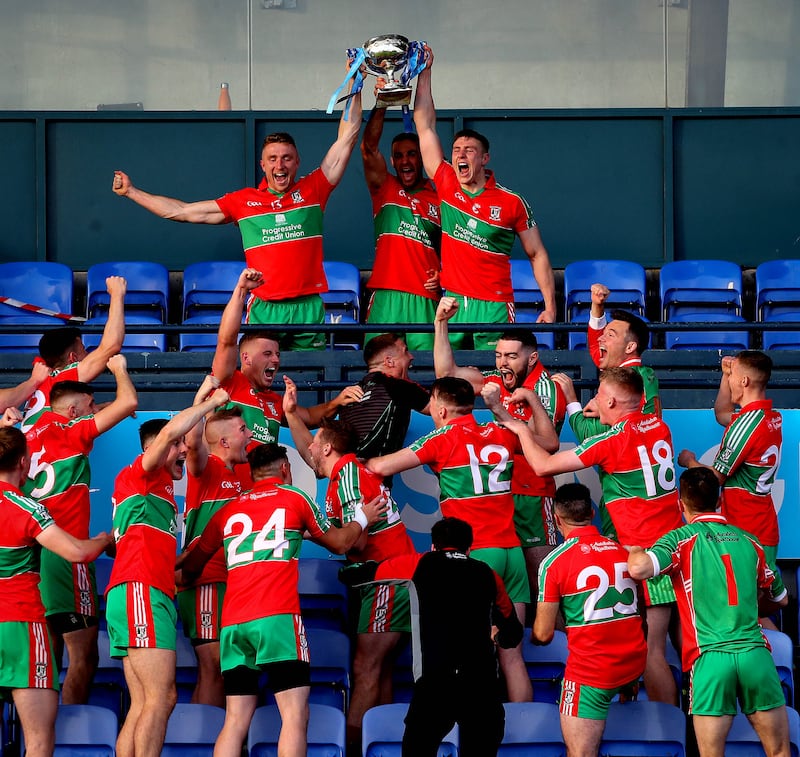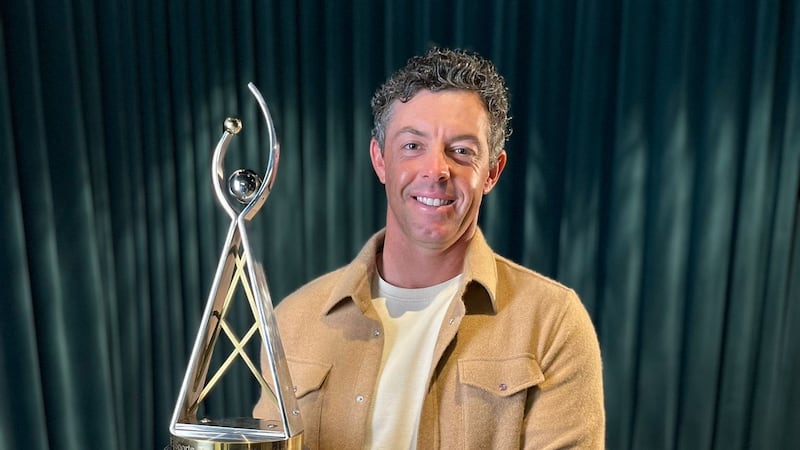Patrickswell had two players named as Hurler of the Year nominees last Thursday morning.
While most of the time keeping the names of your best players out of the papers during game week is a good thing, it would hardly stretch credulity to say that Ballybrown, their opponents in the Limerick senior hurling championship on Sunday, might have been a little intimidated by so high-profile a flexing of muscle 72 or so hours before the teams face each other.
If Aaron Gillane wins the accolade, then one club will have provided the last three Hurlers of the Year, which is quite frankly outrageous. Cian Lynch won it in 2021, Diarmaid Byrnes was the recipient last year, and Gillane will go very, very close this year.
Clubs have had more than three starters on All-Ireland winning teams in the past, but this concentration of talent in one club at one time – genuine, top-tier, best-season-of-their-lives talent – is incredible.
READ MORE
It’s beyond even anything that the Shamrocks of Ballyhale have been able to achieve in the past, although three winners in five years (Michael Fennelly, Henry Shefflin and TJ Reid between 2011 and 2015) is a pretty decent record.
Patrickswell won their county quarter-final last Sunday; that was the same stage at which they were knocked out last year. The Limerick senior hurling championship is extraordinarily competitive, and obviously includes the best hurlers in the country at the moment.
But they are at the same level as two or three other clubs in the county; not below them, and not above them either. They’ve won county titles in 2016, and in 2019, and it might be their year, this year. Then again, it might not be.
When Ballyhale had three hurlers of the year in five years, at least they were winning Kilkenny and All-Ireland club titles hand over fist.
There’s obviously a wide spectrum of abilities on any team that includes Cian Lynch, and regular mortals. And offer any club team Byrnes, Lynch and Gillane, and I’m going to say they’ll probably take them off your hands.
But striking a balance between having a functioning team without your galacticos, and then trying to fit them into a set-up in August after they’ve spent eight months with John Kiely isn’t easy either.

The example of Ballymun Kickhams in the Dublin club championship over the last decade is perhaps instructive. They had five or six players on every match-day 26 throughout this era of Dublin dominance, but the only year they really dominated the Dublin championship and won the thing pulling up was in the Covid-interrupted year of 2020, when the club championship came before the intercounty championship.
In the one year they had their intercounty players at every training session, driving standards, playing every game, cultivating relationships that may have been dormant since the previous autumn’s club championship, they walked away with the Dublin club championship.
But for all the depth of talent they have produced for Dublin in that time, one club championship title in the last 10 years is a fairly mediocre return.
Those Dublin players weren’t trying any less hard for Ballymun in those other years, but the synchronicity between those players, and their club-mates, had to suffer when they spent over half their year with Dublin. And when you look at that record, you begin to ask yourself; is there such a thing as having too many intercounty players on your club team?
The strength of a team is forged in many different ways – the shared suffering of early season ‘physicals’, league wins away from home in front of 15 or 20 people, a late-night reaffirmation of team spirit, perhaps with a few drinks involved. If the heart of your club team is off training and bonding with a totally different set of players, is that counterproductive?
It is increasingly common to see club teams picking their county players in what you might term the more peripheral positions on the field – I’ve lost count of the number of times I’ve seen intercounty midfielders being chosen at wing forward for their clubs, for instance.
And yet it makes sense when you think of it – a partnership at midfield is vital, and if you have two lads who train and play every challenge game at midfield, you convince yourself they’re good enough to keep it up.
And when your county player comes back, you get greedy and think of the damage they could do up against an average club wing back . . . instead of thinking ‘this guy’s the best midfielder in the county, play him in his best position’. It’s a kind of GAA doublethink that so many club teams fall into.
Imagine what it must be like to be a Patrickswell hurler, toiling away all spring and summer, watching your mates having the season of their life in the All-Ireland hurling championship, and then getting a chance to share a dressingroom with them in pursuit of a common goal. That’s got to be a pretty good feeling.
But their own recent history proves that a county semi-final on Sunday week will still take a fair bit of winning, galacticos or not.

















